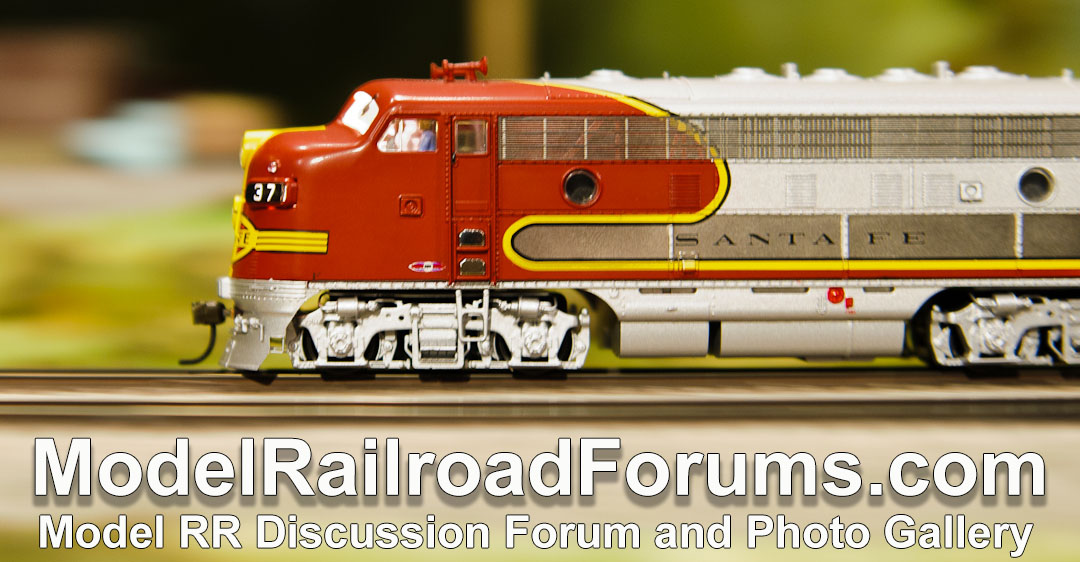Now that we've pretty much beat the causes of steam locomotives traction issues to death, let's move back to ways of improving their traction. Obviously, traction tires, bull frog snot and adding weight can make improvements, but adding weight is not always possible on some models. Traction tires are difficult to find in the correct size and can be expensive. Bullfrog snot seems to work pretty well on wheels designed for traction tires but I have not had success applying to other wheels.
We discussed the possibility of a pusher locomotive disguised as a water tender which I developed. First, I started out with a proto 2000 b unit, put a non sound decoder in it and built a new shell. I thought it was the solution but my results have been less than stellar. It is speed matched pretty closely with my Rivarossi Challenger but when it is pushing, it tends to derail the tender. Ok, add weight to the tender right? But too much weight in the tender, especially the front, pushes down on the drawbar and takes weight off the front wheelset of the trailing truck of the locomotive and causes that to derail. When I add weight, it is no more than a 1/2 Oz at a time but the centipede tender is not very forgiving. At this time, I have not found the right variables to make the results bulletproof. This is still a work in progress.
I am next going to try slowing the pusher slightly so the Challenger is actually trying to pull it but it will assist when the Challenger starts to lose traction when climbing.
I do want to add that the Rivarossi versions of both the Big Boy and Challenger had no electrical pickups and were very light. I have added weight along with the decoder, speakers, electrical wipers and keep alive as room was not available in the boiler without removing a huge amount of much needed weight.
We discussed the possibility of a pusher locomotive disguised as a water tender which I developed. First, I started out with a proto 2000 b unit, put a non sound decoder in it and built a new shell. I thought it was the solution but my results have been less than stellar. It is speed matched pretty closely with my Rivarossi Challenger but when it is pushing, it tends to derail the tender. Ok, add weight to the tender right? But too much weight in the tender, especially the front, pushes down on the drawbar and takes weight off the front wheelset of the trailing truck of the locomotive and causes that to derail. When I add weight, it is no more than a 1/2 Oz at a time but the centipede tender is not very forgiving. At this time, I have not found the right variables to make the results bulletproof. This is still a work in progress.
I am next going to try slowing the pusher slightly so the Challenger is actually trying to pull it but it will assist when the Challenger starts to lose traction when climbing.
I do want to add that the Rivarossi versions of both the Big Boy and Challenger had no electrical pickups and were very light. I have added weight along with the decoder, speakers, electrical wipers and keep alive as room was not available in the boiler without removing a huge amount of much needed weight.


